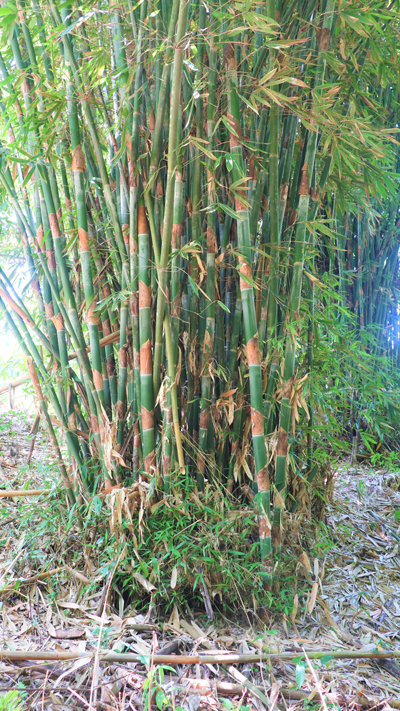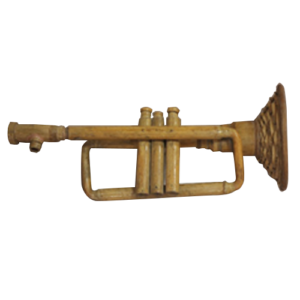Schizostachyum brachycladum (Kurz) Kurz
Green buho
Schizostachyum brachycladum (Kurz) Kurz
Melocanna brachyclada Kurz, Teysm. & Binn. Cat. Hort. Bogor (1866) 20, nomen nudum
Culms closely tufted forming a clump more or less 30 m tall and up to 100 in a clump. Nodes only slightly raised. Internodes green bearing prominent white-waxy bloom especially on the upper internodes, 20.5 – 54.5 cm long, 7.2 – 10.0 cm diameter, wall 0.4 cm thick at the mid- culm. Culm sheaths long, persistent, orange brown, almost half the internode length, auricles inconspicuous. Branches numerous, more or less, 22 per node. Leaves 21.5 – 29.1 cm long x 2.4 – 3.9 wide wide, leaf blade smooth above, with very fine hairs underneath or scabrous, margin scabrous; linear lanceolate, base unequal, apex acuminate, petiole short, up to 0.7 cm long; leaf sheath auricle inconspicuous, bristles arising from the leaf sheath ligule.
In the wild, it can be found in distributed or secondary forests in Southeast Asia up to 600(-2000) m altitude.
Widely used as roofs in split form, handicrafts, banana props, containers from cooking glutinous rice, containers for water and other liquids, and source of fibers for making clothes in the north of Suluwesi, Indonesia.
The green form is similar to the yellow form. Sometimes this form can be mistaken for Gigantochloa atter because of the white-waxy powder on its internodes, but its culms are smaller. Also, the orange-brown culm sheaths can help in its easy identification.
Science in a creative industry.
The DOST-FPRDI has a Bamboo Musical Instruments Innovation R&D program aimed at improving the quality of locally-made bamboo musical instruments (BMIs) through science and innovative technologies. The program seeks to standardize the production of selected BMIs, develop prototype designs, analyze raw material sources and existing markets, and build a BMI processing facility. In addition, the program aims to document the ethnocultural story behind several BMIs and identify the bamboo species used in BMI production to promote public awareness and appreciation of the cultural importance of these musical instruments. The program is a collaboration with the University of the Philippines and Philippine Normal University for teaching modules and analyzing sound quality and standardization of BMI design. The DOST Grants-in-Aid program provides funding.
PhBMI


